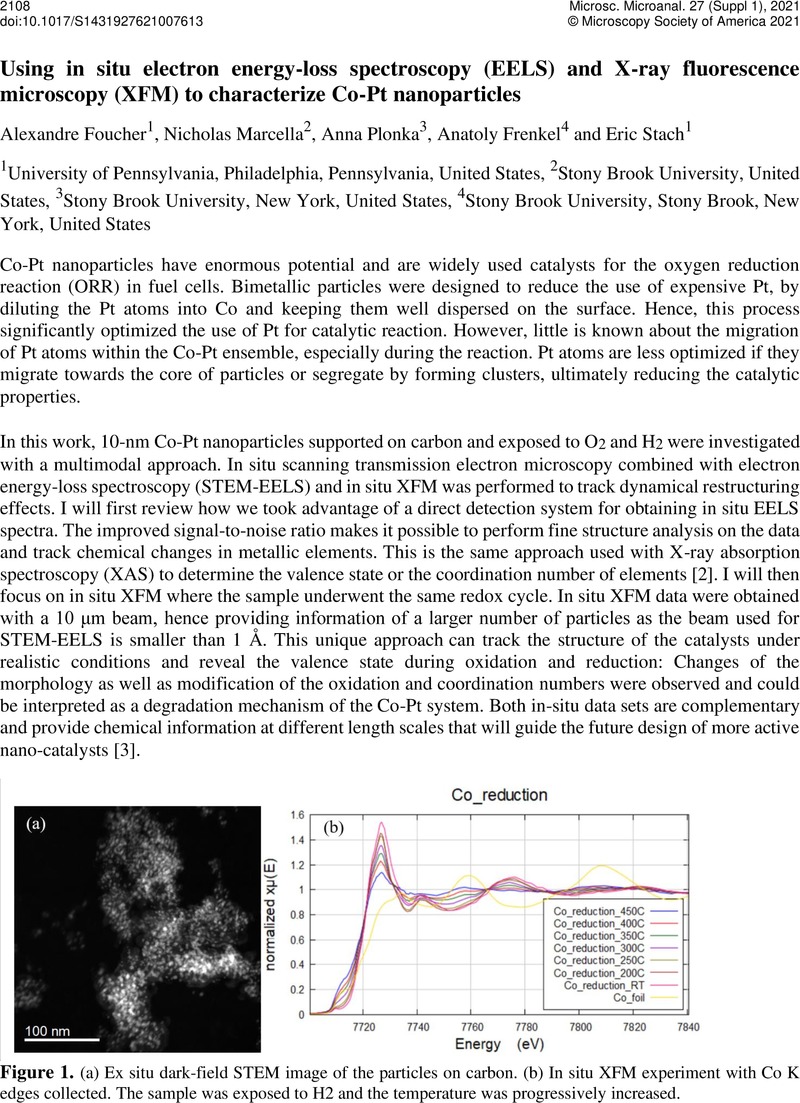No CrossRef data available.
Article contents
Using in situ electron energy-loss spectroscopy (EELS) and X-ray fluorescence microscopy (XFM) to characterize Co-Pt nanoparticles
Published online by Cambridge University Press: 30 July 2021
Abstract
An abstract is not available for this content so a preview has been provided. As you have access to this content, a full PDF is available via the ‘Save PDF’ action button.

- Type
- Advanced Imaging and Spectroscopy for Nanoscale Materials Characterization
- Information
- Copyright
- Copyright © The Author(s), 2021. Published by Cambridge University Press on behalf of the Microscopy Society of America
References
Hart, J.L., Lang, A.C., Leff, A.C. et al. Direct Detection Electron Energy-Loss Spectroscopy: A Method to Push the Limits of Resolution and Sensitivity. Sci Rep 7, 8243 (2017).CrossRefGoogle ScholarPubMed
Hart, J.L, et al. , A Synchrotron in the TEM: Spatially Resolved Fine Structure Spectra at High Energies, arXiv, (2019).Google Scholar
Liu, D., et al. Identifying Dynamic Structural Changes of Active Sites in Pt–Ni Bimetallic Catalysts Using Multimodal Approaches ACS Catalysis, 8 (5), 4120-4131 (2018).Google Scholar
This work was supported as part of the IMASC, an Energy Frontier Research Center funded by the U.S. Department of Energy, Office of Science, Basic Energy Sciences under Award # DE-SC0012573. This research used the XFM Beamline at the National Synchrotron Light Source II, a U.S. Department of Energy (DOE) Office of Science User Facility operated for the DOE Office of Science by Brookhaven National Laboratory under Contract No. DE-SC0012704. This work was carried out in part at the Singh Center for Nanotechnology at the University of Pennsylvania which is supported by the National Science Foundation (NSF) National Nanotechnology Coordinated Infrastructure Program grant NNCI-1542153. Additional support to the Nanoscale Characterization Facility at the Singh Center by the University of Pennsylvania Materials Research Science and Engineering Center (MRSEC) supported by the National Science Foundation (DMR-1720530) is acknowledged.Google Scholar



